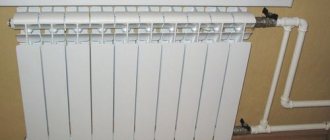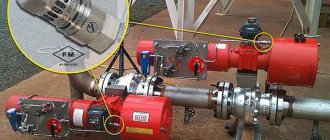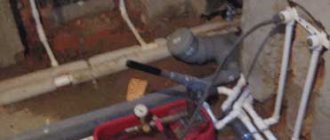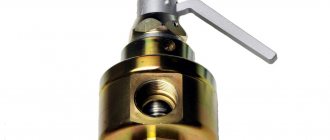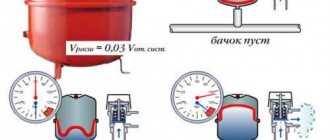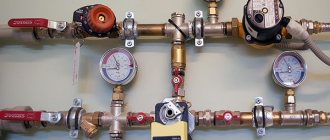Self-installation of a boiler is considered a responsible undertaking that requires maximum compliance with the rules and regulations of connection. A safety group must be involved in piping the water heater, which includes a safety valve for the boiler - a small but functionally important device.
Types of safety valves, their design features. After all, in order to install the heater without errors, you need to understand the structure and operating principle of the valve.
We will also provide instructions for piping the boiler and tips for installing a safety valve, and give useful recommendations on choosing suitable equipment.
What is it needed for
Installing a safety valve prevents the pressure inside the device from increasing above the standard value. What causes blood pressure to rise? As you know, when heated, water expands, increasing in volume. Since the boiler is a sealed device, there is nowhere for the excess to go - the taps are closed, and there is usually a check valve at the supply. Therefore, heating the water leads to an increase in pressure. It may well happen that it exceeds the tensile strength of the device. Then the tank will explode. To prevent this from happening, they install a safety valve for the water heater.
This is what an installed pressure relief valve in a water heater looks like in section
Maybe there is no need to install a safety valve, but simply remove the non-return valve? At a sufficiently high and stable pressure in the water supply, such a system will work for some time. But the solution is fundamentally wrong, and here’s why: the pressure in the water supply is rarely stable. There are often situations when water barely flows from the tap. Then the hot water from the boiler is forced out into the water supply system. In this case, the heating elements will be exposed. They will heat the air for some time and then burn out.
But burnt-out heating elements are not the worst thing. It’s much worse if they get hot, and at this time the pressure in the water supply rises sharply. The water that gets on the hot heaters evaporates, a sharp increase in pressure occurs - with a jerk - which leads to a guaranteed rupture of the boiler flask. At the same time, a decent volume of scalding water and steam escapes into the room under high pressure. What this could mean is clear.
Connecting the water heater to the water supply
If the water supplied to the water heater does not meet sanitary standards for tap water, it is necessary to install a filter at the inlet to the device. The service technician will help you choose its parameters and type.
Screw the safety valve onto the pipe at the cold water inlet (it is marked in blue), 3.5-4 turns, while ensuring the connection is sealed using any waterproofing material (FUM tape, linen, etc.). Connecting the device to the water supply system is only possible using special flexible copper or plastic pipes. During installation, excessive force must not be applied to the water heater pipes to avoid deformation of the pipes and the porcelain coating in the internal tank.
Open the cold water valve after the boiler and hot water tap at the mixer are connected. When the device is completely filled, water will flow from the mixer tap in a continuous stream. If the water heater is connected in places without running water, water can be supplied to the water heater from an auxiliary tank, placing it at a height of about 5 meters from the top mark of the device.
How does it work
It would be more correct to call a safety valve for a water heater a valve system, since there are two of them in the device.
They are located in a brass or nickel-plated case, which looks like an inverted letter “T” (see photo). At the bottom of the housing there is a check valve that prevents the outflow of water from the water heater when the pressure in the system decreases. In the perpendicular branch there is another valve, which, if the pressure is exceeded, allows some of the water to be released through the fitting.
Safety valve device for boiler
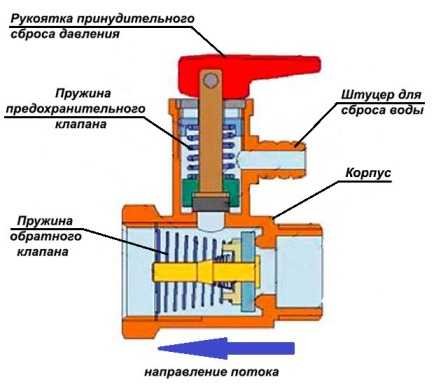
The working mechanism is as follows:
- While the pressure in the boiler is less than that in the water supply (when filling or when the tap is open), the check valve plate is pressed out by the flow of water. As soon as the pressure is equalized, the spring presses the plate against the protrusions of the body, blocking the flow of water.
- When the heating is turned on, the water temperature gradually increases, and with it the pressure also increases. As long as it does not exceed the limit, nothing happens.
- When the threshold level is reached, the pressure compresses the safety valve spring, and the outlet to the fitting opens. Some of the water from the boiler is released through the fitting. When the pressure drops to normal, the spring closes the passage and the water stops flowing.
Based on the principle of operation, it is clear that water will constantly drip from the fitting. This happens when the water heats up and the pressure in the water supply decreases. If you periodically see water on the fitting, then everything is working normally. But the draining liquid must be drained. To do this, put a tube of a suitable diameter on the pipe and secure it with a clamp. The normal operating pressure of the boiler is from 6 Bar to 10 Bar. Without mechanical fastening, the tube will be torn off in no time, so we select a high-quality clamp and tighten it well. Place the tube into the nearest sewer drain.
One more point: the tube for the fitting needs to be transparent and preferably reinforced (the so-called “herringbone”). Why reinforced is understandable - because of pressure, and transparent - to be able to monitor the performance of the device.
How does the valve on a water heater work?
A safety valve is a system consisting of two valves. They are housed in a nickel-plated or brass body. There is a check valve at the bottom that prevents the outflow of liquid from the boiler. There is another one standing perpendicular to it, which is necessary to release part of the water at increased pressure.
The valves operate according to the following principle:
- the pressure is equalized when the fluid flow is blocked when the plate is pressed;
- when the heating is turned on, the water temperature gradually increases;
- when the pressure reaches the upper limit of normal, the outlet to the fitting opens.
Types and varieties
If we are talking about conventional safety valves for a water heater, then they look almost the same, only the nuances differ. But it is these small details that are responsible for the convenience and safety of operation.
Safety valve for boiler with forced pressure release option
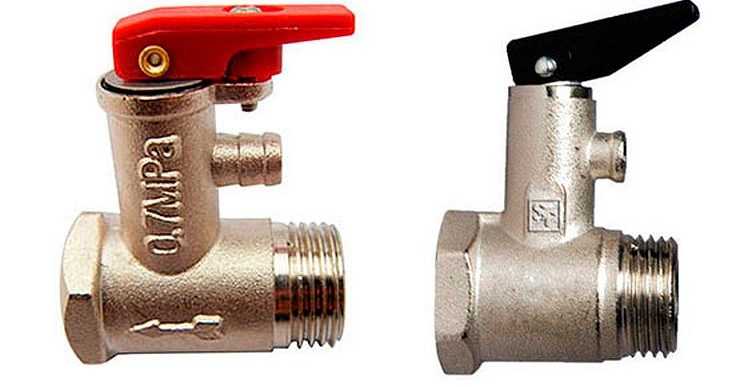
The photo above shows two safety valves with release levers. They are needed for periodic performance checks. The lever flag is lifted up. It pulls the spring behind it, freeing it to release water. This check should be carried out approximately once a month. You can also empty the boiler tank by raising the flag and waiting for everything to drain.
Design Features
The difference in the presented models is that the model in the photo on the left has a lever secured with a screw. This eliminates the possibility of accidental opening and complete discharge of water.
Two more differences are striking. This is an arrow on the body indicating the direction of water movement, and an inscription showing what pressure the device is designed for. Seemingly minor details. But if you can figure out the direction of water movement (look in which direction the poppet valve is turned), then the nominal value is more difficult. How to distinguish, for example, whether it is 6 Bar or 10 Bar? Only checks. How will sellers differentiate them? No way. By boxes. What if they put it in the wrong box? In general, it is better not to take a valve without markings on the body. These are usually the cheapest of the Chinese designs, but the difference in price is not so great that it is worth the risk.
Safety valves - serviceable and not
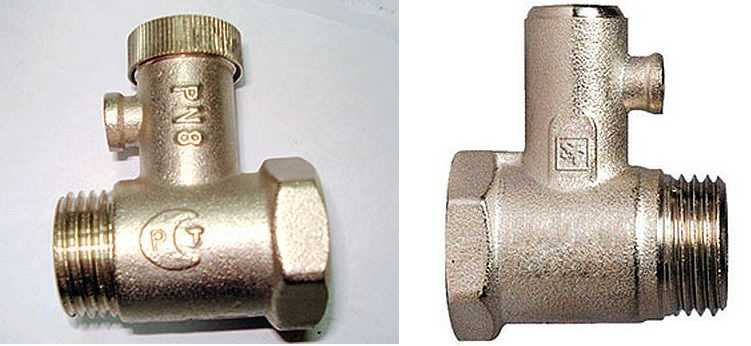
Also pay attention to the shape of the water discharge fitting. The model on the left has a long fitting and has a non-linear shape. The hose fits on it quite easily and is long enough to install a clamp. The shape of the fitting on the model on the right is different - with an extension towards the end, but more importantly, the fitting is short. You can still pull the hose onto it, but the clamp is questionable. Unless you crimp it with wire...
The following photo shows the safety valves without a forced pressure release flag. The one on the left has a threaded cap at the top. This is a serviceable model. If necessary, you can unscrew the lid to remove clogs, scale and other contaminants.
The model on the right is the worst option. No markings, forced resets or maintenance. These are usually the cheapest available, but this is their only advantage.
For large volume boilers
All of the above models are suitable for water heaters with a volume of up to 50-60 liters. Larger boilers come with other models, many of which have built-in additional devices. Typically this is a ball valve and/or pressure gauge to control pressure.
For boilers up to 200 liters
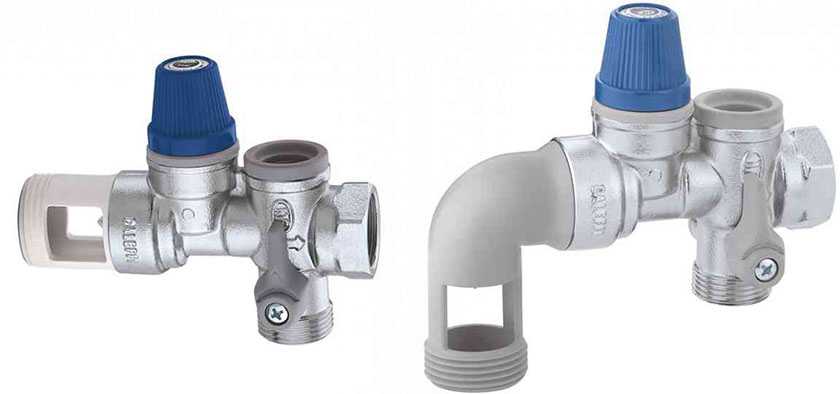
The water drain fitting here has a standard thread, so there will be no problems with fastening reliability. Such devices already have a fairly high price, but their quality and reliability are much higher.
With pressure gauge and original
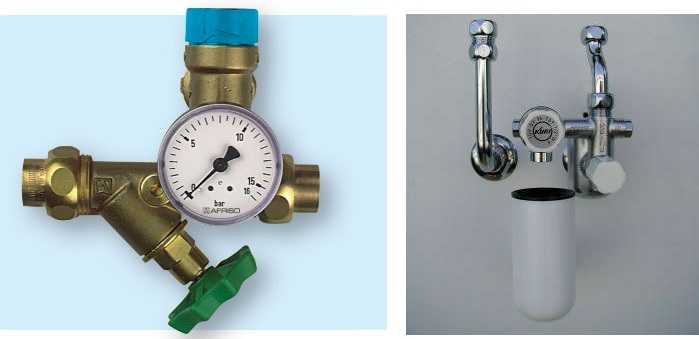
Not everyone likes the appearance of these devices. For those who attach great importance to aesthetics, very attractive devices are produced. Their price, however, is comparable to the price of an expensive water heater, but it’s beautiful.
Is it possible to install other valves?
Sometimes, instead of a special safety valve for a boiler, a blast valve is installed, which is intended for the emergency release of heating water. Although their functions are similar, the main mode of operation is fundamentally different. The demolition device should only be used in emergency situations. It is designed for volley discharge of a large volume of liquid. It is not suitable for constantly bleeding small portions of water. Accordingly, it will not work correctly.
Another case is to install only a check valve. It will not allow water to drain when the pressure in the water supply decreases, but it will not save you from increasing pressure in the boiler. So this option doesn't work either.
How to choose and install
Select a safety valve for a water heater based on the pressure for which the unit is designed. This number is in the passport. The volume of the tank also influences the choice. They produce devices with operating limits of 6, 7, 8, 10 Bar. Basically, all units are designed for this pressure. So everything is simple here.
Installation is simple: flax tow or fum tape is wound onto the threads, after which the valve is screwed onto the pipe. Twist it all the way by hand, then another one or two turns using keys. It is much more important to choose the right place to install it. When installing a water heater, this valve is installed directly on the cold water inlet pipe.
Installation example
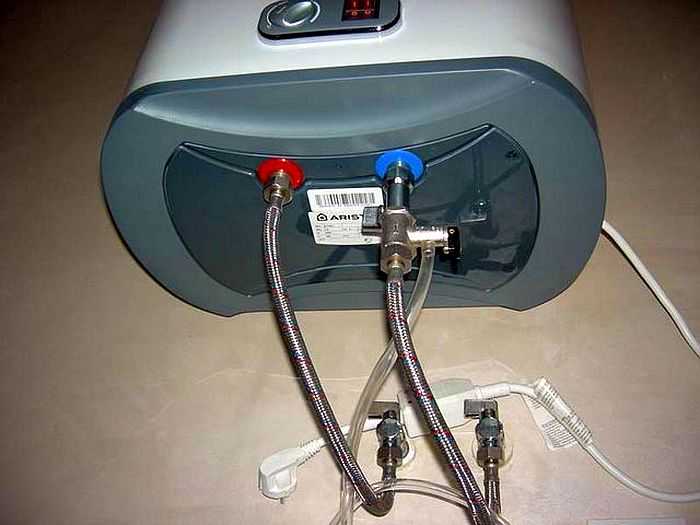
Next there may be a check valve, which is also called a shut-off valve. But this is already reinsurance - the same device is available in the safety device, and often after the water meter at the inlet. The installation diagram is shown below. This is one of the normal options.
Installation diagram of a safety valve for a boiler
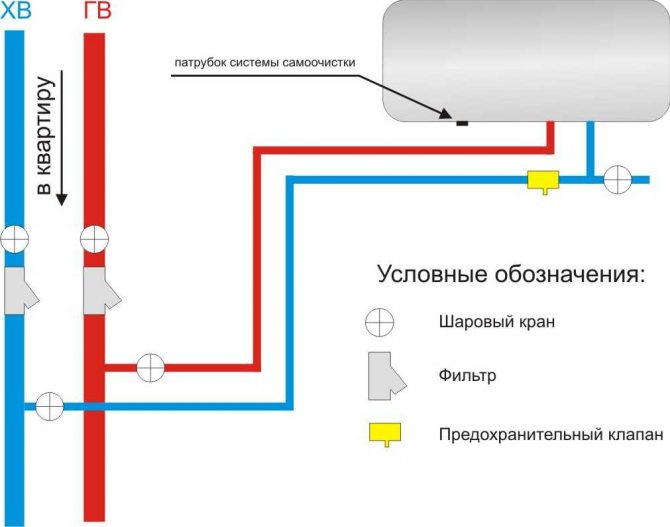
The diagram shows a ball valve. It is necessary to empty the tank before storing it for the winter (at dachas) or before dismantling it for prevention and repair. But more often they put it on a tee, which is screwed directly onto the inlet pipe of the water heater. A safety valve is screwed onto the tee from below, and a ball valve is placed in the side outlet.
Installing a safety valve after a tee
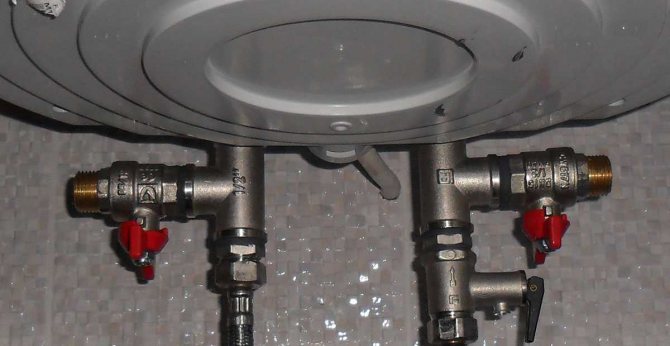
Actually, these are all normal options.
How to install
You need to wrap the thread on linen tow, then screw the valve onto the pipe. Next, tighten it all the way and make a couple of turns using the wrench.
Important! To select a safety valve, you need to check the maximum pressure of the boiler. It is indicated in the device passport.
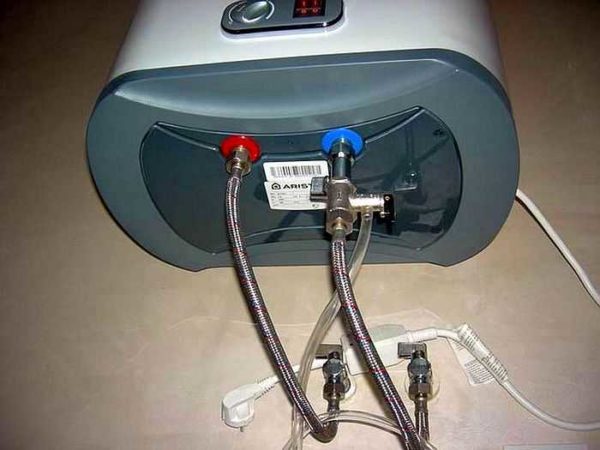
After the main work, you can install a check valve. It is needed for reinsurance. The element protects the product from possible damage.
Useful articles, news and reviews on our Yandex Zen channel
Go
Breakdowns, causes, elimination
In principle, the safety valve for a water heater has only two failures: water either often flows from it or does not flow at all.
First of all, it must be said that bleeding of water when heating is the norm. This is how the system is supposed to work. Water may also be released when the boiler is turned off, if the pressure in the cold water supply pipes is higher than the valve response limit. For example, the valve is 6 bar, and the water supply is 7 bar. Until the pressure drops, the water will be released. If this situation repeats often, it is necessary to install a reducer, and it is best to use water in an apartment or house, but there are compact models of reducers that can be installed at the entrance to the boiler.
Boiler piping with safety valve and reducer
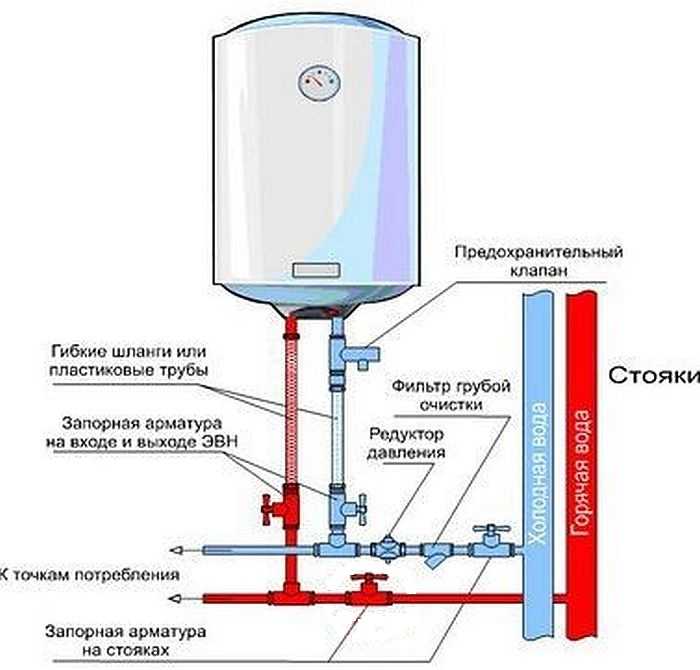
How to check the serviceability of the valve? If there is an emergency reset lever, this is easy to do. With the boiler turned off, you need to lift the lever several times to release excess pressure. After this, the dripping stops and does not resume until heating begins.
If water continues to drain, the spring may be clogged. If the model is serviceable, the device is disassembled, cleaned, and then put back in place. If the model is not collapsible, you just need to buy a new valve and install it.
This is what the reducer looks like - to stabilize the pressure on the boiler
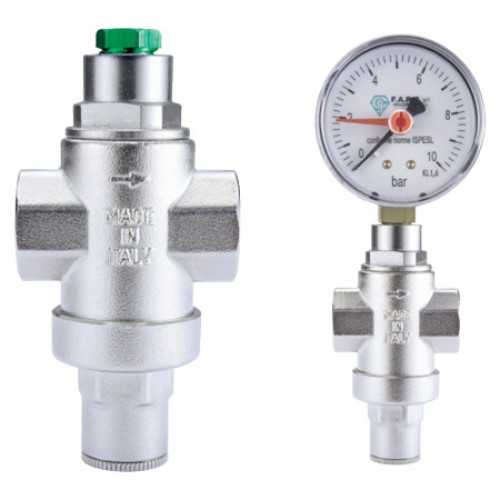
Constantly dripping water is unpleasant and hurts your wallet, but not dangerous. It is much worse if, when heating the water, you never see water in the pipe. The reason is that the valve is clogged or the outlet fitting is clogged. Check both options. If it doesn’t help, change the valve.
